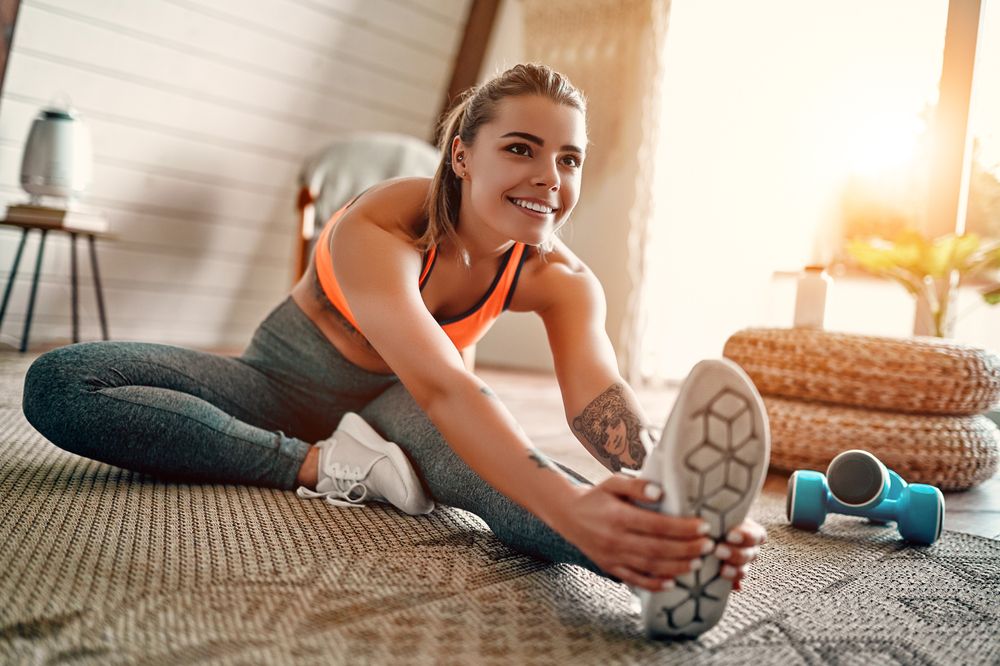For beginners, simplicity reigns supreme over ineffective mobility drills. Opting for straightforward exercises that require minimal setup and guidance is key to avoiding mental fatigue and diving straight into movement. Efficiency is paramount, focusing on movements that enhance flexibility and mobility to complement broader fitness goals like strength training, muscle building, or weight loss.
Here's a curated collection of the top 10 mobility drills for beginners, personally integrated into my daily coaching routine for clients and athletes alike. These drills prioritize movement quality and unleash the body's potential, offering a comprehensive approach to mobility enhancement categorized into lower-body, upper-body, and full-body exercises.
Whether you're gearing up for the gym or embracing active recovery, begin your session with lower-body drills, smoothly progress to upper-body exercises, and cap it off with one of the dynamic full-body selections.
Feel the rhythm as your body embraces the benefits of enhanced mobility and flexibility. Keep reading for the top 10 mobility drills tailored for beginners.
Lower Body:
1) Half-kneeling Hip Flexor to Hamstring
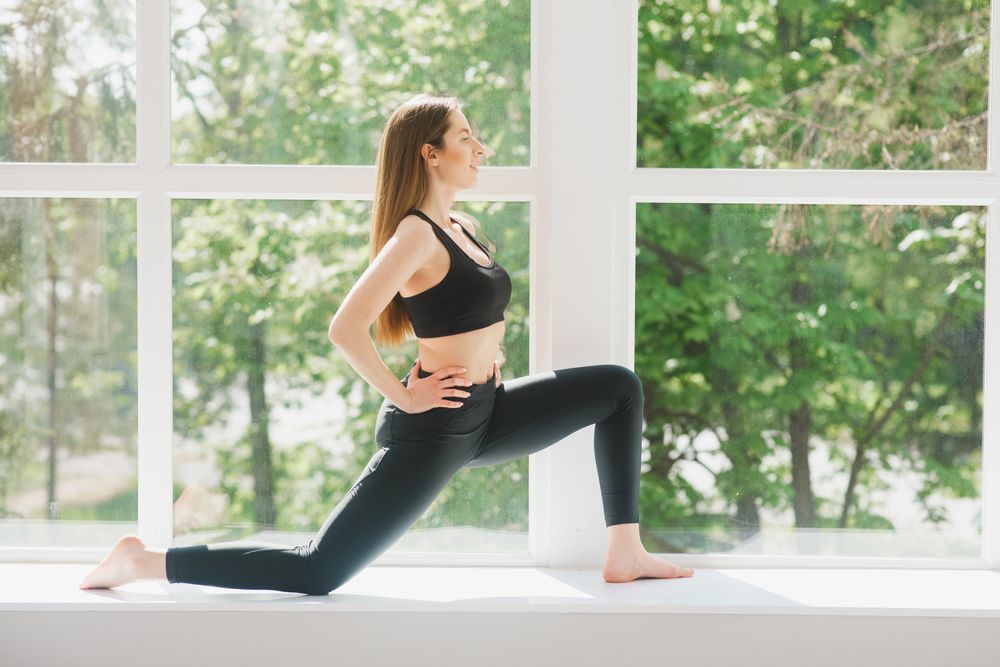
Benefits: The half-kneeling hip flexor to half-front split drill enhances flexibility and joint mobility, focusing on vital muscle groups such as the hip flexors, quadriceps, and hamstrings. It's designed as a beginner-friendly combination exercise, ideal for warming up, cooling down, or dedicated mobility sessions. By enhancing hip and lower body range of motion, it helps reduce injury risks during physical activities and improves overall athletic performance.
Muscles targeted: Hip flexors, quadriceps, hamstrings, lower back
How to perform it: Begin in a half-kneeling position with one knee on the ground and the opposite foot flat on the floor in front of you. Shift your weight onto your front foot while maintaining contact between your back knee and the ground, simultaneously pushing your hips slightly forward to stretch the hip flexors. Transition smoothly by sliding your front foot forward, straightening your front leg into a half-split position, and allowing your hips to descend toward the floor. Return to the starting position and repeat on the opposite side.
Sets and Repetitions: Perform three sets of five to 10 repetitions per side, holding each position for five to 10 seconds.
2) Single-leg Rockback

Benefits: The single-leg rockback serves as an exceptional mobility drill tailored for beginners, with a focus on vital muscle groups including the quads, adductors, glutes, and hip flexors. By engaging in this exercise, beginners can effectively mobilize these muscle groups, leading to improved overall flexibility and range of motion in the hips and lower body. Its simplicity renders it accessible for newcomers to fitness, enabling them to progressively develop strength and stability. Incorporating the single-leg rock back into a warm-up regimen can be particularly advantageous in preparing the body for squat exercises, as it activates and primes the muscles essential for proper squat mechanics.
Muscles targeted: Quads, adductors, glutes, hip flexors
How to perform it: Begin in an all-fours position with hands and knees on the ground. Extend one leg out to the side, placing the foot on the floor. Inhale deeply, then gently push the hips back towards the heel of the kneeling leg. Pause for three seconds upon feeling a stretch in the adductors and quads of the extended leg, then exhale and return to the starting position.
Sets and Repetitions: Complete three sets of 10 to 15 repetitions per side, pausing for three seconds at the end of each repetition.
3) Supine Twist
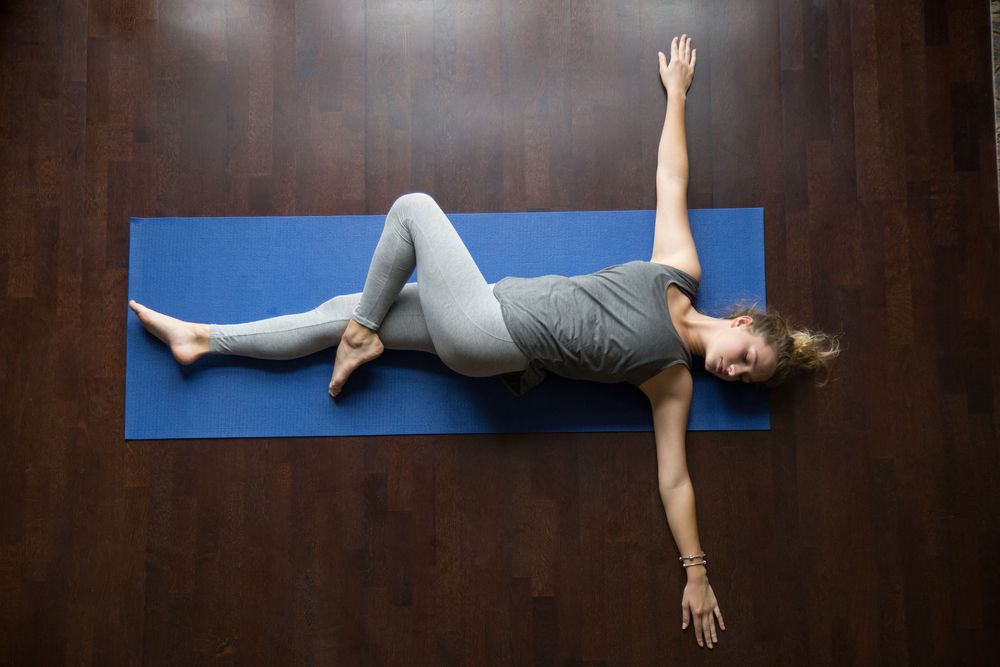
Benefits: The supine twist offers a gentle stretch to the glutes, lower back, and surrounding muscles through a gradual rotational movement. Similar to the importance of strength training across various movement patterns, integrating mobility exercises like the supine twist aids in maintaining flexibility and range of motion in the spine and hips.
Muscles targeted: Lower back, glutes, piriformis, tensor fasciae lata (TFL)
How to perform it: Begin by lying flat on your back with both legs extended. Bring your right knee towards your chest, holding briefly. Next, place your left hand on top of your right knee and gently guide your leg across your body, allowing your lower body to rotate while keeping your upper back and shoulders grounded on the floor. You should experience a gentle stretch in your lower back and glutes.
Sets and repetitions: Perform two to three sets of 30 to 60-second holds for optimal benefits.
4) Wall-supported Hip Circles
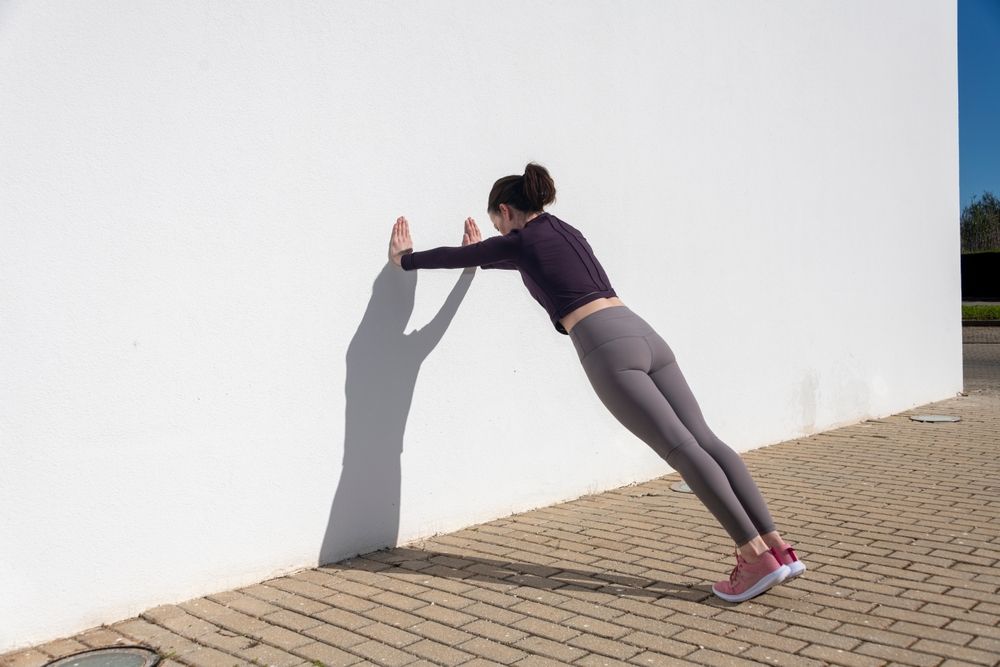
Benefits: Wall-supported hip circles provide numerous advantages for enhancing hip mobility and overall flexibility through active movement. By targeting key muscles surrounding the hips, such as the hip flexors, glutes, and abdominals, this exercise contributes to improving the range of motion and stability in the hip joints. Its wall-supported nature makes it accessible for individuals of diverse fitness levels, and it can seamlessly be integrated into warm-up or cooldown routines to foster improved hip health and function.
Muscles targeted: Hip flexors, quadriceps, glutes, adductors, abductors, core
How to perform it: Stand facing a wall with your hands placed at shoulder height for support. Engage your core muscles to maintain stability, and lift one knee toward your chest to initiate the circular motion. Rotate the knee outward away from the body, then inward toward the midline, completing a full circle. After completing the repetitions, reverse the circle direction by lifting your knee out first, then bringing it in front of your chest. Switch legs and repeat the movement in the opposite direction. Maintain an upright torso and straight supporting leg throughout the exercise.
Sets and repetitions: Perform three to four sets of five to 10 repetitions in each direction per leg for optimal results.
Upper Body:
5) Cat/Cow

Benefits: The cat/cow mobility drill is particularly beneficial for beginners, offering a means to mobilize the back and spine while facilitating thoracic extension and flexion. This dynamic exercise proves highly effective in alleviating back pain, enhancing upper back mobility, and promoting shoulder blade function.
Muscles engaged:
Cat Pose—erector spinae, rectus abdominis, obliques, lats
Cow Pose—erector spinae, rectus abdominis, transverse abdominis, shoulders
How to perform it: Begin by positioning your hands under your shoulders and aligning your knees under your hips. Inhale deeply, then exhale as you arch your upper back, drawing your hips towards your abdomen to assume the cat pose. Inhale once more, lifting your chest and head while lowering your abdomen and ribcage to the floor, transitioning into the cow pose.
Sets and repetitions: Perform three sets of eight to 15 repetitions, holding each position for two seconds to derive maximum benefit.
6) Prone Chest Stretch
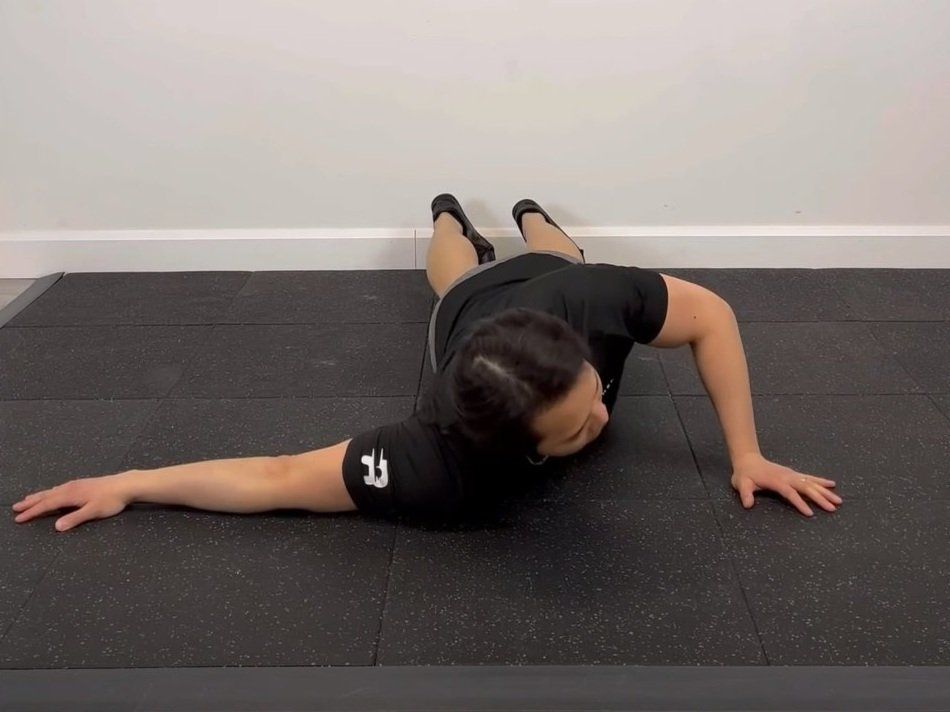
Benefits: The prone chest pec stretch stands out as a superior upper-body mobility exercise, targeting enhanced flexibility in the shoulders and chest while facilitating rotational mobility for the upper, mid, and lower back. Whether performed with short-duration repetitions or as static holds, this stretch effectively addresses tightness in the chest muscles, contributing to an improved range of motion in the shoulders and spine.
Muscles engaged: Shoulders, pectorals (pecs), mid-back, rectus abdominis, obliques
How to perform it: Lie face down on the floor or a mat, extending both arms to the sides to create a "T" position. Keep your left arm straight as you slide your right hand under your right shoulder. Press your right hand gently into the floor as you reach and rotate your right leg behind your body, lifting your right shoulder off the ground. Experience a gentle stretch in your left chest and shoulder while it remains in contact with the floor. Hold for three seconds, then repeat on the opposite side, alternating with each repetition.
Sets and repetitions: Complete three sets of five to 10 repetitions per side, holding each repetition for three seconds to maximize effectiveness.
7) Side-lying T-Spine Rotation

Benefits: Side-lying T-spine rotations excel in mobilizing the upper back and shoulders, enhancing rotational mobility, and stretching the lats. This exercise zeroes in on the thoracic spine, fostering flexibility and mobility in rotational movements. With its straightforward setup and execution, this drill proves particularly advantageous for beginners seeking to enhance their upper-body mobility and posture.
Muscles engaged: Thoracic spine, lats, pectorals (pecs), shoulders, lower back, glutes
How to perform it: Lie on your side with knees bent and arms extended in front of you. Gradually rotate your top arm and shoulder towards the floor behind you while maintaining focus on your hand. Pause briefly, experiencing a stretch in your upper back and shoulders, then return to the initial position. Repeat the movement on the opposite side. Prioritize controlled movements and gradual increments in the range of motion.
Sets and repetitions: Perform three sets of 10 to 15 repetitions per side to optimize the benefits of this exercise.
8) Dead Hangs (Supported)
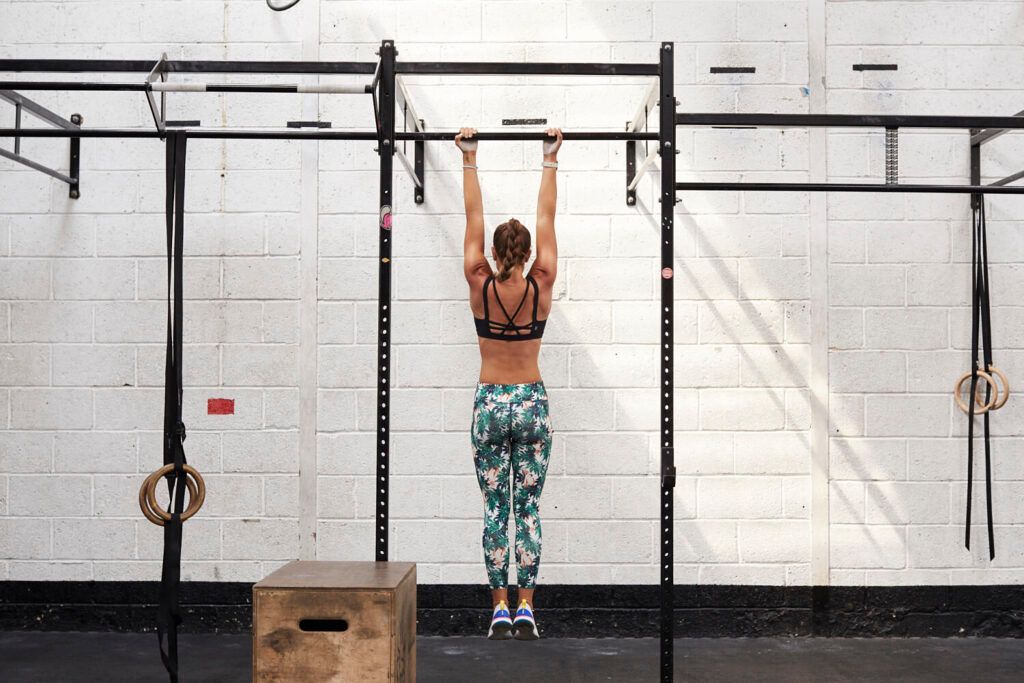
Benefits: Supported dead hangs offer an effective method to decompress the spine, stretch the upper body muscles, and enhance grip strength. With a simple setup requiring only a pull-up bar, they provide an accessible way to reap these benefits.
Muscles engaged: Wrists, arms, shoulders, lats, erector spinae, spine decompression
How to perform it: Begin by gripping a sturdy horizontal bar (such as a pull-up bar) with an overhand grip slightly wider than shoulder-width apart, ensuring your toes touch the ground for support. Before hanging, activate your shoulder blades by pulling them down and back to stabilize your shoulders. Once hanging, allow your body to relax and let gravity decompress your spine, experiencing a gentle stretch through your shoulders, back, and potentially down into your hips and legs.
Sets and repetitions: Perform three sets of 15 to 30-second holds, adjusting the duration as desired for longer sets.
Full Body:
9) World's Greatist Stretch (WGS)
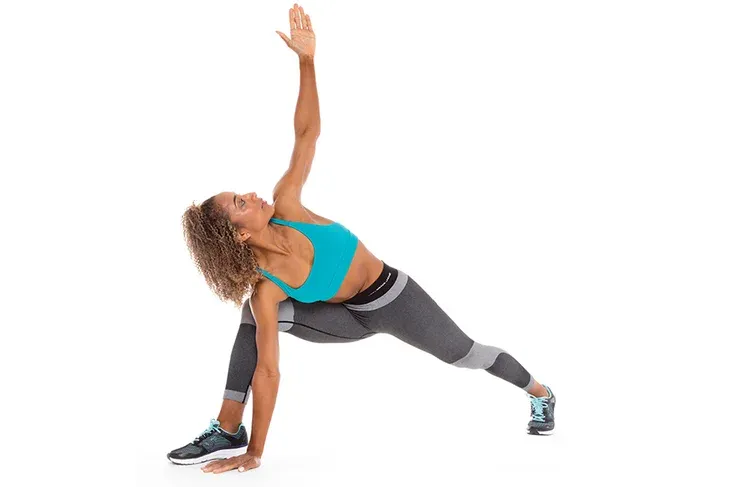
Benefits: The world's greatest stretch earns its title as a top-choice mobility drill, offering a comprehensive exercise that smoothly transitions your body through essential positions. This exercise promotes full-body mobility and enhances flexibility in both the upper and lower body. It serves as an exceptional addition to any warm-up routine in the weight room, an active recovery day, or a quick full-body mobility session.
Muscles engaged: Hip flexors, hamstrings, glutes, quadriceps, adductors, calves, thoracic spine
How to perform it: Begin by stepping forward with your left leg into a lunge position, while keeping your right knee raised above the floor. Lower your right hand to the ground, aligning it with your left foot, and position your left elbow inside your left foot, allowing it to rest on the floor. Ensure your hips are squared to feel the stretch evenly on both sides while maintaining a flat back. Extend your left hand outside your left foot and twist your torso upward, reaching towards the sky while actively pulling your left foot's toes towards your shin. Transition by placing both hands on the floor and straightening your left leg, lifting your right leg off the ground to mobilize your hamstrings. Return to the starting position and repeat the sequence on the opposite side.
Sets and repetitions: Perform three sets of three to six repetitions per side for optimal benefits. Adjust the intensity and volume as needed based on your fitness level and goals.
10) Deep Squat to T-Spine Reach
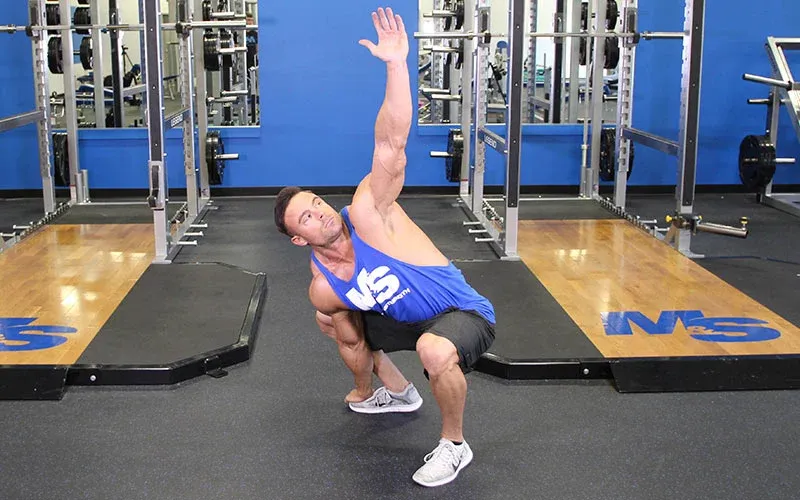
Benefits: The deep squat with a T-spine reach stands out as a vital exercise for beginners, targeting essential muscle groups to enhance flexibility, stability, and range of motion. This dynamic movement not only improves fundamental movement patterns but also heightens awareness of thoracic spine mobility. Regular incorporation of this exercise enables beginners to release tight muscles, enhance posture, and mitigate injury risks, establishing a strong foundation for their fitness journey.
Muscles engaged: Hip flexors and extensors, quadriceps, hamstrings, thoracic spine, shoulders, core
How to perform it: Start by standing with feet slightly wider than shoulder-width apart, then descend into a deep squat position, ensuring heels remain grounded. Extend your right arm upward, rotating the torso to the right, then reach across your body towards the inside of your left foot. Pause briefly to experience the stretch through your spine, shoulders, and hips. Return to the starting position and repeat the movement on the opposite side.
Sets and repetitions: Complete two to three sets of five to eight repetitions to effectively reap the benefits of this exercise. Adjust the intensity and volume based on individual fitness levels and progression goals.

